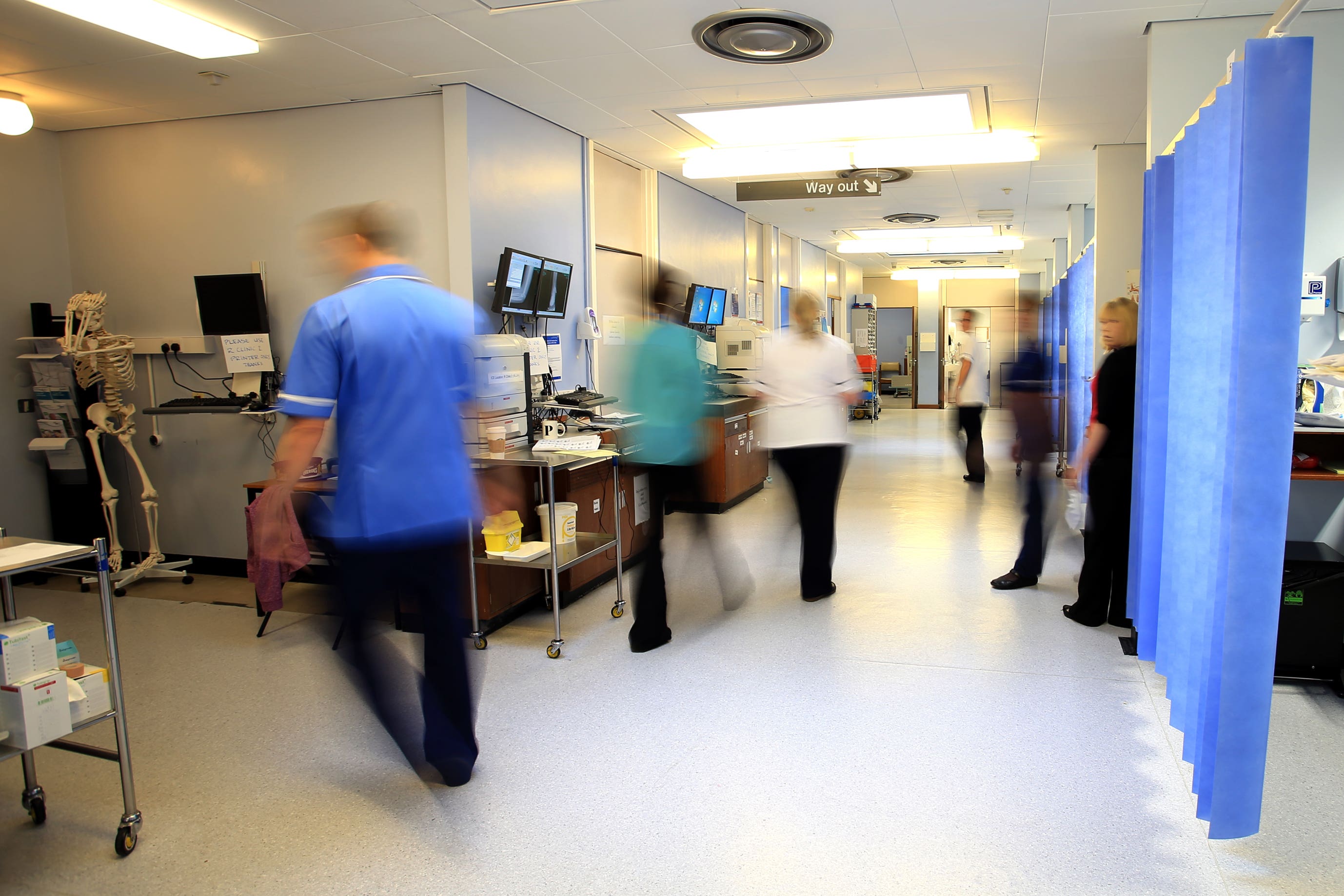NHS waiting lists in England climb to new record
The new data comes amid a fresh wave of industrial action across the health service, with junior doctors walking out on strike for five days.

Your support helps us to tell the story
From reproductive rights to climate change to Big Tech, The Independent is on the ground when the story is developing. Whether it's investigating the financials of Elon Musk's pro-Trump PAC or producing our latest documentary, 'The A Word', which shines a light on the American women fighting for reproductive rights, we know how important it is to parse out the facts from the messaging.
At such a critical moment in US history, we need reporters on the ground. Your donation allows us to keep sending journalists to speak to both sides of the story.
The Independent is trusted by Americans across the entire political spectrum. And unlike many other quality news outlets, we choose not to lock Americans out of our reporting and analysis with paywalls. We believe quality journalism should be available to everyone, paid for by those who can afford it.
Your support makes all the difference.NHS waiting lists in England have climbed to a record level, data has revealed.
Figures released on Thursday showed that 7.47 million people were waiting to start routine hospital treatment at the end of May, up from 7.42 million at the end of April.
It is the highest number since records began in August 2007.
In May, some 385,022 people had been waiting more than 52 weeks to start routine hospital treatment, up from 371,111 at the end of April.
During the same period, 11,446 people were estimated to have been waiting 18 months to start treatment, down slightly from 11,477.
The Government and NHS England have set the ambition of eliminating all waits of more than a year by March 2025.
Professor Sir Stephen Powis, NHS national medical director, said: “Every new month brings more evidence of record demand across many areas of NHS care with staff experiencing the busiest June ever for A&E attendances, no doubt exacerbated by the record high temperatures experienced for that month.
“This ongoing pressure on services is precisely why it is so important to highlight that staff continue to make progress in reducing the longest waits for care and in May despite strikes, high demand and three bank holidays, they treated record numbers of patients – almost 4.5 million people – within 18 weeks.”
Sir Stephen said the latest wave of strikes represents “an incredibly challenging period” for the NHS.
Junior doctors walked out for five days from 7am on Thursday in what is the longest spell of industrial action in the history of the health service.
They return to work at 7am on July 18 and 48 hours later consultants are set to strike for two days. Radiographers across 43 NHS trusts will also walk out for two days from July 25.
Sir Stephen added: “So while staff will continue to work hard to provide patients with the care they need there is no doubt this period of action is likely to have the biggest impact yet.”
Tim Mitchell, vice-president and president-elect of the Royal College of Surgeons of England, said the climb in waiting lists is “disappointing but not unexpected”.
“Despite the huge effort that NHS staff are putting in to get patients seen quickly, the situation remains challenging,” he added.
“The longer patients remain on waiting lists, the longer they aren’t able to get on with their lives. In the most serious cases, patients will be unable to work and will need support to carry out the day-to-day tasks that most of us take for granted.
Earlier this month, Rishi Sunak said industrial action across the NHS is making it “more challenging” to bring down waiting lists.
The Prime Minister pledged to cut the figure earlier this year, when it stood at 7.2 million.
It is estimated that eight months of strikes has led to the cancellation or postponement of about 651,000 appointments and routine procedures.
Elsewhere, figures showed the number of people waiting more than 12 hours in A&E departments in England, from a decision to admit to actually being admitted, was 26,531 in June, down 16% from 31,494 in May.
Some 73.3% of patients were seen within four hours, down from 74.0% in May. The figure hit a record low of 65.0% in December.
The NHS recovery plan sets a target of March 2024 for 76% of patients attending A&E to be admitted, transferred or discharged within four hours.
There were 245,595 urgent cancer referrals made by GPs in England in May, up 13% on 218,060 in April and up slightly (0.1%) year-on-year from 245,449 in May 2022.
The proportion of cancer patients who saw a specialist within two weeks of being referred urgently by their GP rose from 77.7% in April to 80.8% in May, but remained below the target of 93%.
The 93% target was last hit in May 2020, during the early months of the Covid-19 pandemic.
The number of patients waiting longer than 62 days since an urgent GP referral for suspected cancer was 23,499 in the week ending May 28, up from 22,533 in the week ending April 30.
The figure was nearly 34,000 at the end of September 2022.
Most of those waiting do not have cancer and are waiting for a diagnostic test, while around one in seven do have cancer and are waiting for treatment.
A total of 58.7% of cancer patients who had their first treatment in May after an urgent GP referral had waited less than two months, down from 61.0% in April. The target is 85%.
Meanwhile, 71.3% of patients urgently referred for suspected cancer were diagnosed or had cancer ruled out within 28 days, unchanged from the previous month.